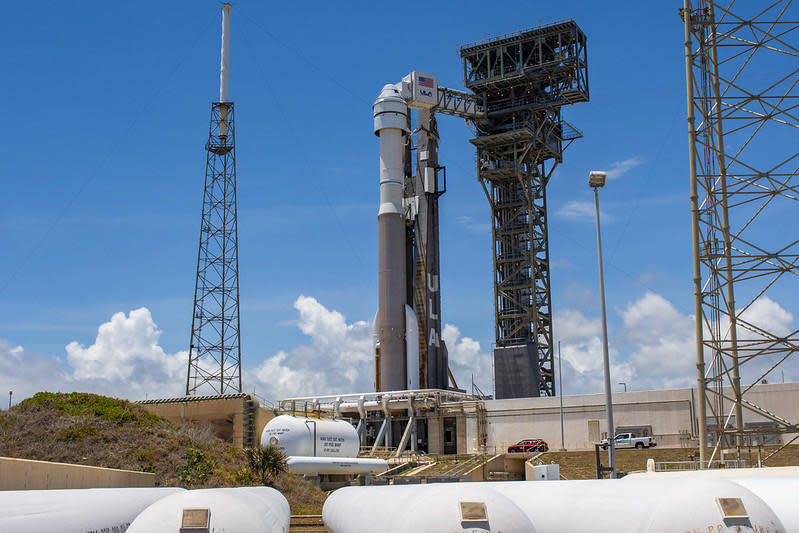Plans to launch Boeing’s oft-delayed Starliner spacecraft on its first crewed test flight on Saturday were suspended Tuesday night to give managers more time to evaluate a small problem. helium leak in the ship’s propulsion system. A new launch target has not been announced.
The Starliner crew – commander Barry “Butch” Wilmore and co-pilot Sunita Williams – remained at the Johnson Space Center in Houston awaiting news on when to head to the Kennedy Space Center to make final preparations for launch from the International Space Station.

They expected to lift off at 3:09 p.m. EDT Saturday, assuming NASA and Boeing managers agreed it would be safe to launch the spacecraft “as is,” with a small but persistent leak in the craft’s propulsion pressurization system.
But multiple sources said Tuesday that the option was no longer on the table, as additional meetings were planned to discuss the rationale for launching the spacecraft, assuming the leak would not worsen during flight.
In a brief statement Tuesday, NASA said, “The team has been in meetings for two consecutive days, evaluating flight logic, system performance, and redundancy. There is still future work in these areas, and the next opportunity to Possible launch is still being discussed.”
NASA has not announced when the analysis might be completed or when another launch attempt might be made. Short-term launch opportunities beyond Saturday and Sunday, based on Starliner’s ability to match the station’s orbit, are May 28 and June 1, 2, 5, and 6.
The latest delay was a familiar setback for the unlucky Starliner, which has suffered a steady stream of frustrating complications since an initial unpiloted test flight in 2019 was marred by software problems and communications failures. A second unmanned test flight was launched, and although it was generally successful, more problems were discovered upon its return to Earth.
The helium leak was first detected during a launch attempt on May 6. At the time, engineers concluded that the leak rate was small enough to allow launch, but the countdown has been canceled after engineers at United Launch Alliance, builder of Atlas, noticed unusual behavior in an oxygen pressure relief valve on the Centaur rocket’s upper stage.
Managers ultimately decided to transport the rocket back to the company’s Vertical Integration Facility to replace the valve. This work was completed without incident and the new valve was cleared for flight.
Boeing engineers took advantage of the delay to conduct a more complete assessment of the helium leak, which was traced to a specific reaction control system thruster in one of four “doghouse” assemblies mounted around the exterior of the module. Starliner drum-shaped service.
Each doghouse has four orbital maneuvering and attitude control (OMAC) thrusters and four smaller reaction control system maneuvering jets. Pressurized helium gas is used to push propellants into the rocket engines in each doghouse, as well as four powerful launch abort engines that would only fire in the event of a catastrophic booster failure.
Engineers tightened bolts around the flange where the leak was detected, pressurized the lines, and performed tests to determine if the leak was still present. However, the launch was rescheduled for May 21 and then, when tests revealed that the leak was still present, for Saturday, to give engineers more time to evaluate the data.
The flight is now suspended indefinitely, pending the results of the ongoing analysis.
The Dish: Sautéed spaghetti is a family favorite
Why Trump’s defense only called 2 witnesses before closing the case
Granddaughter of Georgia Tech’s first black graduate graduates from same school










/cdn.vox-cdn.com/uploads/chorus_asset/file/25521507/notepadspellcheck2.jpeg?w=300&resize=300,300&ssl=1)



























